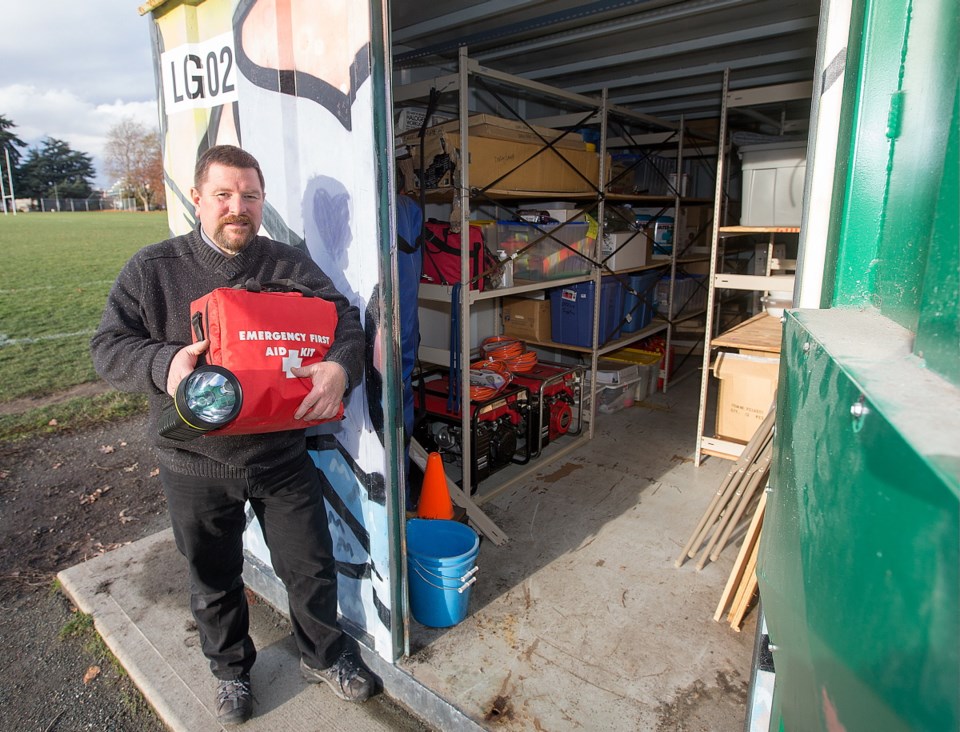There are significant inequities among schools when it comes to earthquake-safety supplies, a situation the Greater Victoria school board wants to correct.
A district committee assessing the matter says the situation has developed largely because supplies tend to be purchased through fundraising efforts by parent advisory councils, and some parent groups are more familiar with fundraising than others.
The supplies — emergency food, flashlights, blankets and more —are often stored outside schools in large bins built to withstand earthquake conditions.
It’s an important issue because many schools are designated as community gathering points in the event of an earthquake or other emergency, said board chairwoman Edith Loring-Kuhanga.
“I think we’re just trying to address the general needs across the district, and some schools are better able to access funds and support earthquake supplies,” said board vice-chairman Tom Ferris.
“That’s one issue. Another issue is these earthquake supplies are not just for students, but they are really a community resource.
“Therefore, we should perhaps be involving the community in this.”
The lack of a consistency when it comes to getting the supplies to schools is a concern for many parent groups, said Audrey Smith, president of the Victoria Confederation of Parent Advisory Councils. She said her organization, which represents about 45 parent groups, began talking to the school board about the concern two years ago.
“We had very receptive ears,” she said.
District superintendent Piet Langstraat, who notes schools are among “the safest buildings in Victoria” in terms of earthquake protection, said the board wants to see some changes with regard to the kits. The provincial government is already involved in a program to bring school buildings up to seismic standards.
“I would say the board’s position is very much that it should be something that is paid for by some arm of government,” he said.
“There’s certainly differing perspectives. Some people would say it should be a municipal responsibility. Others would say that the Ministry of Education should be responsible.”
A statement from the ministry said it does not specifically fund earthquake kits.
“Whether and how to procure earthquake kits is the responsibility of boards of education,” the statement said. “The ministry provides boards of education with operating funding and they are responsible for allocating funds within their district.”
The board is wrestling with the best way to proceed, Langstraat said. “We certainly want to ensure that all our students are well looked after in the case of an emergency.”
Loring-Kuhanga said that both municipalities and the provincial government should “step up to the plate” to help deal with the situation.
“Most of our schools, regardless of where we are in the province, are generally used as muster stations,” she said.
“So why wouldn’t the government be also trying to make sure there’s equity across the province, as to all the schools being prepared for the emergencies?”
Paying for earthquake-safety supplies should not be left to individual school districts, schools or parent groups, Loring-Kuhanga said. “It has to be across the board,” she said. “Why not help us prepare, so that we’re ready?
“Don’t expect us to take it out of our operating budget or capital budget, or expect our parents to fundraise for it.”
Public involvement could come through reviving the district’s Greater Victoria Foundation for Learning, the committee said.
“One of the things that a foundation could do is fundraising as a district, instead of individual schools, and be able to distribute funding more equitably,” Langstraat said.



